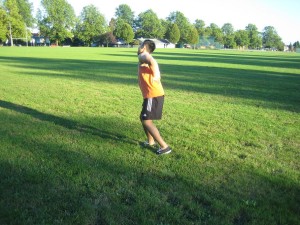Ankylosing spondylitis is a type of spondyloarthritis characterized by tenderness of the spine, large-sized joints and the toes and fingers. This condition can result to pain and stiffness.
When it comes to ankylosing spondylitis, it is common among men than women. It develops between the ages of 20-40. The exact cause of ankylosing spondylitis is not known but the condition has a tendency to run in families which indicates that genetics plays a role.
What are the signs and symptoms?
Mild to moderate flare-ups of inflammation usually alternate with episodes where there are no symptoms.
The most common symptom is no other than back pain. The pain varies in intensity from one episode to another and from one individual to another. The pain is worse at night time and in the morning. The stiffness that occurs early in the morning is often relieved by activity. The pain in the lower back and the associated muscle spasms are often relieved by bending forward. Individuals who assume a stooped posture can end up with a lasting bent-over position. In some, the spine can become evidently stiff and straight.

Treatment
The management for ankylosing spondylitis is aimed on the following:
- Alleviating joint and back pain
- Maintaining range of motion in the joints
- Preventing damage to other organs
- Prevention or restoring spinal deformities
NSAIDs can be given to minimize the pain and inflammation to allow the individual to perform exercises to restore posture including deep breathing and stretching.
In some individuals, methotrexate can be given to reduce the pain in the joints. Corticosteroid eye drops and dilating eye drops can momentarily help deal with the inflammation of the eyes. In some cases, an occasional corticosteroid injection can be beneficial for 1-2 joints. Opioid analgesics and muscle relaxants are often used but only for brief periods to alleviate significant pain and muscle spasms.
The long-term objective in managing ankylosing spondylitis is to maintain proper posture and develop strong back muscles. It is recommended that the individual engages in daily exercises that strengthen the muscles that oppose the tendency to bend and stoop. Since chest wall movement can be limited which impairs lung function, it is strongly advised to avoid cigarette smoking.

